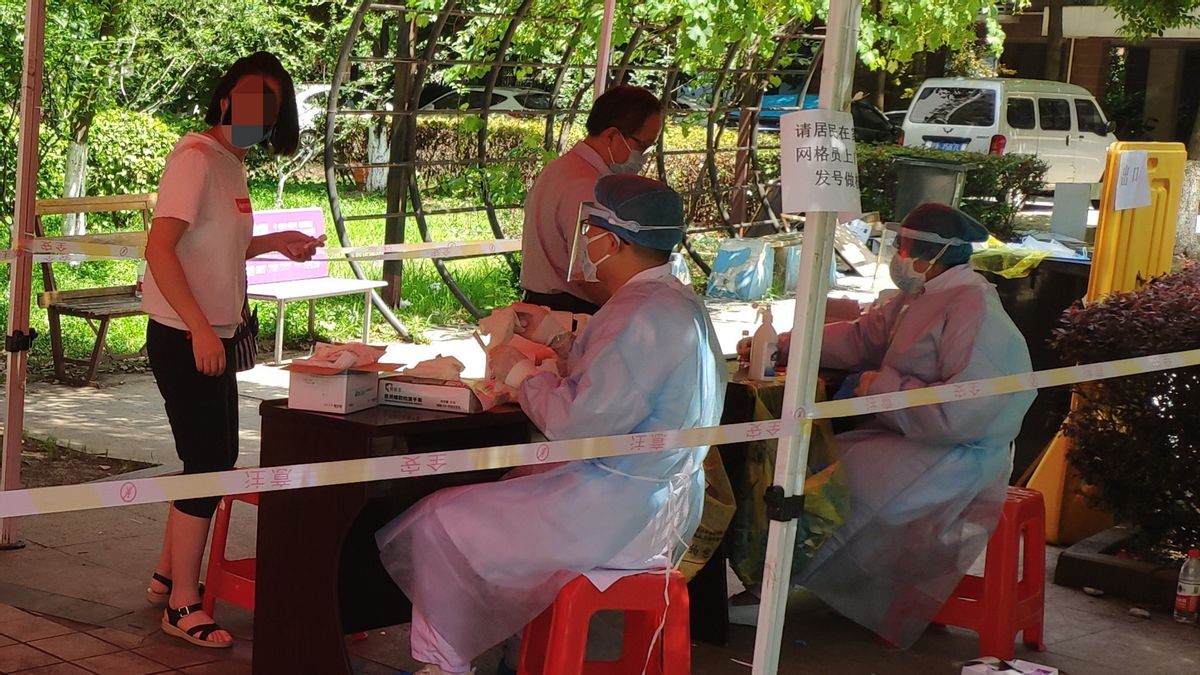JAKARTA - A Chinese research team has found a new COVID-19 test method, helping people to avoid discomfort in the throat or nose for COVID-19 nucleic acid testing.
In fact, the new method is claimed to save time, as the new test method only requires the patient to exhale into the bag for 30 seconds, with 5-10 minutes to complete the analysis.
Citing the Global Times on October 20, a research team led by Yao Maosheng, Professor of the College of Environmental Science and Engineering at Peking University said the COVID-19 test is very accurate and can distinguish between COVID-19 carriers, healthy people and patients with other respiratory infections.
The study was based on the expiration of 74 COVID-19 patients, 30 patients with other respiratory infections and 87 healthy people. There are 12 signals of volatile organic compounds (VOCs) carried by their breath from their breath, which can be considered as 'fingerprints.'
Higher levels of propanol were detected in the exhaled breath of patients with COVID-19 and other respiratory infections than in healthy subjects. While breath-borne acetone was found to be significantly lower for COVID-19 patients, compared to those with other respiratory infections, Yao said.
Based on 12 VOC signals, an algorithm was created, and verification of the algorithm found that the accuracy ranged from 91 to 100 percent.
The fast procedure and high accuracy provide a new method, an advantage over rapid antigen-based assays.
"This new technology does not require any reagents and has a lower detection limit for detecting VOC species," said Yao.
The new method is also inexpensive, costing 10 yuan or about US$1.5, compared to nucleic acid tests that charge 80 yuan for takers.
This test is able to identify people infected with COVID-19 with a false negative throat swab test. Asymptomatic and pre-symptomatic infections can be detected early.
In addition, the study was jointly carried out by the Environmental Simulation and Pollution Control Laboratory of Peking University and the Chaoyang District Center for Disease Control and Prevention in Beijing.
"It can be used in a variety of scenarios, including the Beijing Winter Olympics," Yao said. But the expert noted, because China doesn't have many cases, further data and validation tests may be needed before the technology is implemented.
The English, Chinese, Japanese, Arabic, and French versions are automatically generated by the AI. So there may still be inaccuracies in translating, please always see Indonesian as our main language. (system supported by DigitalSiber.id)








